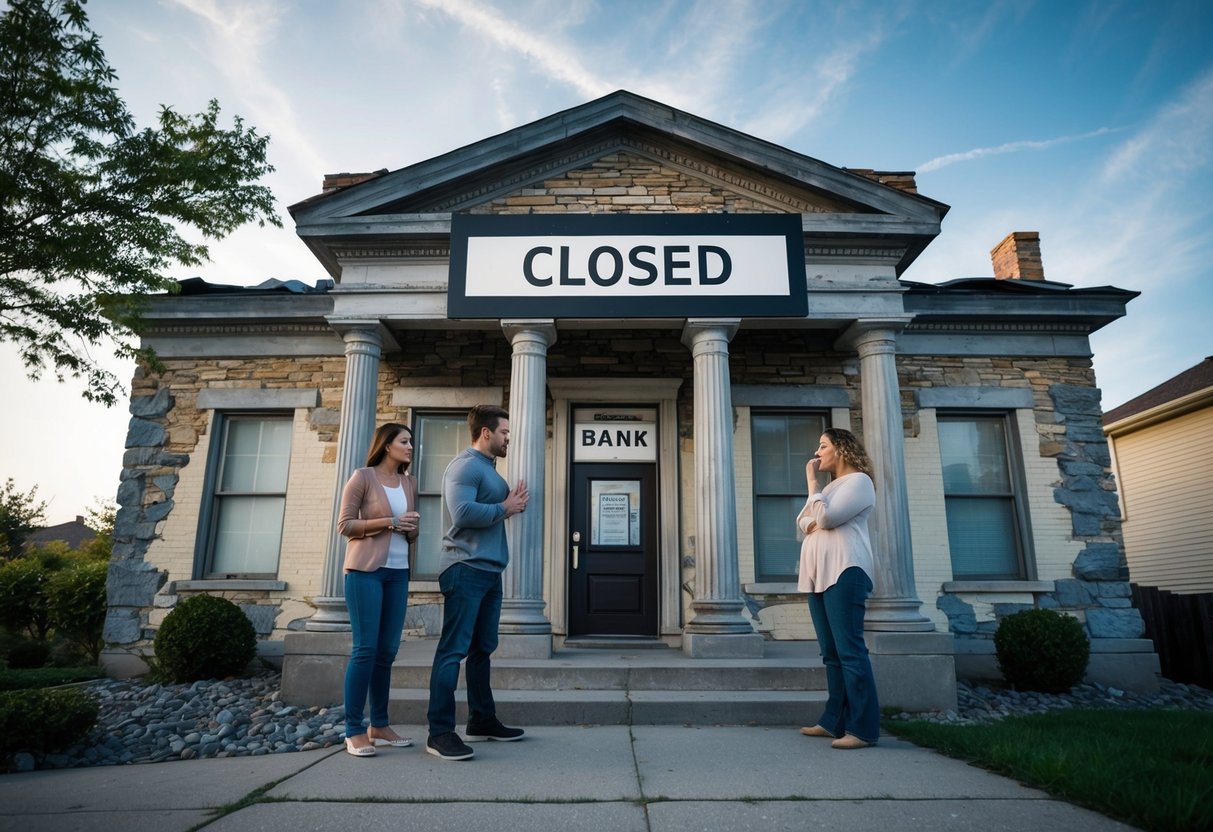Buying your first home can be tough. The First Home Super Saver Scheme (FHSS) aims to help Aussies save for a deposit. It lets you use your super account to save money for your first home.

The FHSS scheme allows you to save up to $50,000 in your super for a home deposit. You can make extra contributions to your super and later withdraw them, plus earnings, for your first home purchase. This can give your savings a boost thanks to the tax breaks in super.
From 15 September 2024, some changes are coming to the FHSS scheme. These updates may affect how you can use the scheme and who can apply. It’s smart to check the new rules if you’re thinking about using FHSS to save for your first home.
Key Takeaways
- You can save up to $50,000 in your super for a first home deposit
- The FHSS offers tax benefits to boost your savings
- New rules for the scheme start from 15 September 2024
Understanding the FHSS Scheme

The First Home Super Saver Scheme helps Australians save for their first home deposit through their super fund. It allows you to make extra contributions and later withdraw them, plus earnings, to put towards a home purchase.
Eligibility Criteria for FHSS
To use the FHSS Scheme, you must:
- Be at least 18 years old
- Have never owned property in Australia before
- Not have previously requested an FHSS release
- Live or intend to live in the home you buy as soon as possible
- Move in within 12 months of purchase
You’ll need to make voluntary contributions to your super fund. These can be:
- Before-tax (salary sacrifice)
- After-tax contributions
The scheme lets you contribute up to $15,000 per year and $50,000 in total.
How the Scheme Helps First Home Buyers
The FHSS Scheme boosts your savings in a few ways:
Tax benefits: Before-tax contributions are taxed at just 15% in your super fund.
Higher returns: Super funds often earn more than savings accounts.
Forced savings: Contributions come out of your pay before you can spend them.
Withdrawal boost: When you take money out, you get your contributions plus earnings.
You can withdraw up to $50,000 of eligible contributions plus associated earnings. This can give your deposit a big lift compared to regular savings.
Remember, you must apply to the ATO to release your FHSS savings before signing a contract to buy or build a home.
Contributions to FHSS

The First Home Super Saver Scheme allows you to make specific contributions to your super fund to save for your first home. These contributions can help you build a deposit faster due to tax benefits and potential investment returns.
Types of Contributions
You can make two main types of contributions to the FHSS scheme: voluntary concessional and voluntary non-concessional contributions. Voluntary concessional contributions include salary sacrifice arrangements and personal contributions you claim a tax deduction for. These are taxed at 15% in your super fund.
Voluntary non-concessional contributions are made from your after-tax income. They don’t get taxed when entering your super fund. Both types can be used for the FHSS scheme, but they have different tax treatments when you withdraw them.
The scheme doesn’t use your employer’s Superannuation Guarantee contributions or government co-contributions.
Voluntary Concessional and Non-Concessional Contributions
Voluntary concessional contributions can be a smart way to save for your first home. You can set up a salary sacrifice arrangement with your employer or make personal contributions and claim a tax deduction. This can lower your taxable income and potentially save you money on tax.
Non-concessional contributions don’t offer upfront tax benefits. But they can be a good option if you’ve reached your concessional cap or want to contribute more to your FHSS savings.
You can mix both types of contributions to maximise your savings potential. The choice depends on your income, tax situation, and savings goals.
Contribution Caps and Limits
The FHSS scheme has specific caps on how much you can contribute and withdraw. You can apply to release up to $15,000 of eligible contributions from any one financial year. The total limit across all years is $50,000 per person.
For couples, this means a combined total of $100,000 can be released under the scheme. Remember, these caps are separate from the general super contribution caps.
The general concessional contributions cap is $27,500 per year. The non-concessional contributions cap is $110,000 per year. It’s crucial to stay within these limits to avoid extra tax.
Only contributions made from 1 July 2017 count towards your FHSS release amount. Keep track of your contributions to make sure you’re making the most of the scheme without exceeding any caps.
Tax Benefits and Considerations
The First Home Super Saver Scheme offers tax advantages to help you save for your first home. It’s important to understand how contributions, withdrawals, and earnings are taxed.
Tax Treatment of Contributions
You can make two types of contributions to the FHSS scheme: concessional and non-concessional. Concessional contributions are taxed at 15% in your super fund. This rate is often lower than your income tax rate, saving you money.
Non-concessional contributions aren’t taxed when they go into your super fund. They’re made from your after-tax income.
You can contribute up to $15,000 per financial year, with a total cap of $50,000. These limits apply to the sum of both types of contributions.
Withdrawing and Using the FHSS Amount
When you’re ready to buy your first home, you can apply to withdraw your FHSS savings. The Australian Taxation Office (ATO) will calculate your maximum withdrawal amount.
The ATO will withhold tax from your withdrawal. This is because the money you take out is added to your taxable income for that financial year.
You’ll get a 30% tax offset to help balance out this extra tax. This offset appears on your tax return for the year you make the withdrawal.
Understanding Associated Earnings
The ATO calculates ‘associated earnings’ on your FHSS contributions. These aren’t actual investment returns. They’re based on a set formula using the shortfall interest charge rate.
Associated earnings are included in your FHSS withdrawal amount. They’re taxed at your marginal tax rate, minus the 30% tax offset.
You don’t need to report these earnings on your tax return. The ATO handles this automatically when you make your FHSS withdrawal.
Remember, you must use your FHSS savings to buy or build your first home within 12 months of receiving the funds. If you don’t, you might face extra tax.
The Withdrawal Process

The First Home Super Saver Scheme (FHSS) withdrawal process involves a few key steps. You’ll need to request a release of funds, receive an FHSS determination, and understand any fees involved. Let’s look at each part of the process.
Requesting a Release of Funds
To start the withdrawal process, you need to ask the Australian Taxation Office (ATO) to release your FHSS savings. You can do this through your MyGov account. Log in and go to the ATO section. Look for the FHSS option and follow the steps to request a release.
Make sure you have a signed contract to buy or build a home before you ask for the money. You can only request one release in your lifetime. If you change your mind, you might not be able to use the scheme again.
The ATO will check if you’re eligible and how much you can withdraw. They’ll look at your voluntary contributions and any earnings on those contributions.
The FHSS Determination
After you request a release, the ATO will send you an FHSS determination. This is a document that tells you:
- How much you can withdraw
- The breakdown of your contributions and earnings
- Any tax you might need to pay
The determination is valid for 12 months. You need to sign a contract to buy or build a home within this time. If you don’t, you can ask for a 12-month extension.
You can accept the determination or ask the ATO to change it if you think it’s wrong. Once you accept it, the ATO will tell your super fund to release the money.
Fees and Charges
There are a few costs to think about when you withdraw your FHSS savings:
- Your super fund might charge a fee to release the funds
- The ATO doesn’t charge a fee for the determination or release
- You might need to pay some tax on the money you withdraw
The tax you pay depends on your situation. The ATO will withhold some tax before they send you the money. They’ll give you a 30% tax offset to help reduce your overall tax bill.
If you’re in financial hardship, you can ask the ATO to reduce or cancel the amount of tax they withhold. You’ll need to provide proof of your situation.
Using the FHSS Amount

The FHSS scheme lets you use your super contributions to buy your first home. You can use the released funds for a deposit or other costs when buying or building a property.
Eligible Property Types
You can use your FHSS amount to buy or build a home in Australia. This includes houses, units, and townhouses. You can also use it for vacant land if you plan to build on it. The property must be for you to live in, not as an investment.
Houseboats and motor homes don’t count as eligible properties. You can’t use the funds for company title interests in land either.
The property market doesn’t affect your ability to use the FHSS amount. You can buy in any area, as long as it’s in Australia.
Property Contract and Purchase Details
When you’re ready to use your FHSS amount, you need to sign a contract within 12 months. This can be to buy or build a home. You must also live in the property for at least 6 months in the first year after buying or building.
You can ask for the FHSS amount before you sign a contract. This gives you time to find the right property. But remember, you need to use the money within 12 months of getting it.
If you don’t use the funds in time, you can ask for an extension. Or you can put the money back into your super. You might have to pay extra tax if you don’t use the funds properly.
Post-Purchase Requirements

After using the First Home Super Saver Scheme to buy your home, you need to follow specific rules. These rules make sure you use the scheme as intended and keep the benefits.
Occupancy and Time Rules
You must move into your new home within 12 months of buying it. This rule is strict, so plan your move carefully. You also need to live in the property for at least 6 months in that first year.
If you can’t move in within 12 months, you can ask the ATO for more time. They might give you up to 24 months in special cases.
You can’t rent out the whole property in the first year. But you can rent out a room if you still live there too.
If you don’t follow these rules, you might face penalties. The ATO could make you pay extra tax. In some cases, you might have to put the money back into your super fund.
Remember, the property market can change. Make sure you’re ready to buy and live in your new home when you use this scheme.
Financial Planning and Advice

Smart financial planning can boost your savings and help you reach your home ownership goals faster. Getting expert advice may give you an edge in using the First Home Super Saver Scheme.
Consider Seeking Professional Financial Advice
A financial adviser can help you make the most of the First Home Super Saver Scheme. They can look at your income, spending, and savings to create a tailored plan. This may include tips on how much to put into your super for the scheme.
An adviser can explain the tax benefits of the scheme. They can show you how to save on tax while growing your deposit. They may also help you avoid common mistakes that could slow down your savings.
Your adviser can run the numbers to see how the scheme fits with your other financial goals. This includes your retirement savings. They can help you balance short-term home buying goals with long-term super growth.
Remember, the right advice could save you money and time in the long run. It’s worth weighing up the cost of advice against the potential gains.
Recent Changes and Updates to the FHSS

The First Home Super Saver (FHSS) scheme has undergone several important changes to improve its effectiveness for first home buyers. These updates aim to make the scheme more flexible and accessible.
Legislative Amendments and Updates
From 1 July 2022, the maximum amount you can release under the FHSS scheme increased to $50,000. This is a significant boost from the previous limit. The change allows you to save more towards your first home deposit through your super.
The Australian Taxation Office (ATO) announced new rules starting 15 September 2024. If your FHSS application was rejected between 1 July 2018 and 14 September 2024, you may now be eligible for a release. You don’t need to contact the ATO about this – they’ll handle it automatically.
The government has given more power to the Commissioner of Taxation. This means there’s now greater flexibility in the scheme’s operation. These changes aim to improve your experience when accessing the FHSS scheme.
Remember, FHSS contributions are taxed at just 15%. This is often lower than your normal tax rate, helping you save faster for your first home.
Useful Tools and Resources

The First Home Super Saver Scheme offers helpful tools to make saving for your first home easier. These resources can help you plan and track your progress.
ATO’s FHSS Scheme Calculator
The Australian Taxation Office (ATO) provides a free FHSS Scheme Calculator on their website. This tool lets you work out how much you can save and withdraw under the scheme.
To use the calculator, you’ll need to enter details like your income, super contributions, and planned savings. The calculator then shows you:
- The maximum amount you can save each year
- Your estimated total savings
- The potential tax benefits
You can also see how salary sacrificing might boost your savings. The calculator factors in current interest rates to give you a realistic estimate.
It’s a good idea to use the calculator before you start saving. This way, you can set clear goals and make the most of the scheme.
You can access the calculator through your myGov account or the ATO website. It’s user-friendly and updates regularly with the latest scheme rules.
Frequently Asked Questions

The First Home Super Saver Scheme helps Aussies save for their first home through super. It has rules on who can use it, how much you can save, and how to get your money out.
How does the First Home Super Saver Scheme assist with saving for a deposit?
The scheme lets you put extra money into your super to save for a home deposit. You can save up to $15,000 per year, with a total limit of $50,000.
This money grows in your super fund. It may earn more than a regular savings account.
When you’re ready to buy, you can take out the extra savings you put in, plus any earnings.
What are the eligibility criteria for the First Home Super Saver Scheme?
You need to be 18 or older to use the scheme. You must not have owned property in Australia before.
You have to live in the home you buy for at least 6 months in the first year after purchase.
You can only use the scheme once. If you’ve used it before, you can’t use it again.
Can you provide an example of how the First Home Super Saver Scheme works in practice?
Let’s say you earn $80,000 a year. You decide to put an extra $10,000 into your super each year for three years.
After three years, you’ve saved $30,000. This money has also earned interest in your super fund.
You apply to withdraw the money. The ATO tells you how much you can take out.
You use this money as part of your deposit to buy your first home.
What are the advantages and disadvantages of using the First Home Super Saver Scheme?
Advantages:
- You may save on tax
- Your savings might grow faster in super
- It can help you save more for a deposit
Disadvantages:
- There are limits on how much you can save
- You can’t access the money until you’re ready to buy
- There are rules about how you use the money
What is the process for withdrawing funds under the First Home Super Saver Scheme?
First, you apply to the ATO for a FHSS determination. This tells you how much you can withdraw.
Next, you apply for a FHSS release. The ATO will send the money to you.
You then have 12 months to sign a contract to buy or build a home. If you don’t, you might have to put the money back into super or pay extra tax.
How is the First Home Super Saver Scheme taxed?
The money you put in is taxed at 15% in your super fund. This is often less than your normal tax rate.
When you take the money out, it’s taxed at your marginal tax rate minus a 30% tax offset.
This means you might pay less tax overall compared to saving outside of super.








